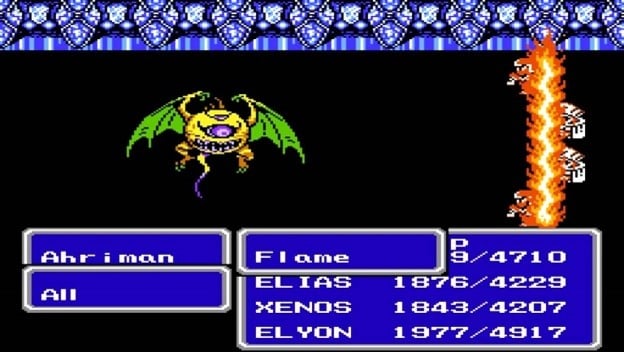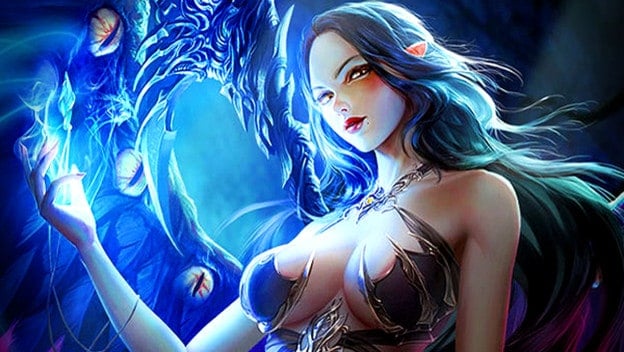Thanks to shows like Critical Role, Harmonquest, Stranger Things, and an episode of Community, Dungeons and Dragons seems to be experiencing a bit of a resurgence. In fact, it’s played by a wide range of people who don’t appear conventionally nerdy on the surface. It’s amusing, because for a long time video games were king and, true, they still pretty much are. But the two mediums seem to feed into one another, and it would appear that Dungeons and Dragons had a hand in shaping the course of video games.
The game was first published in 1974 and grew in popularity despite, or perhaps because of, controversy. It depicted a magical world, similar to the one seen in The Lord of the Rings , but it was a world players could interact with. They could inhabit the role of heroes, each with different classes, and dive into dungeons. It was roleplaying in its truest sense, but it was supported by player-chosen stats and chance derived from the rolling of dice. There were rules to create an adversarial environment for the player’s interactive story. It’s no wonder it was engaging.
And it was no wonder that computer games, including a version of Dungeons and Dragons , started to appear to offer opportunity to the solo player when they were away from their group. They never eclipsed the popularity of the tabletop game, though. But a surge of games inspired by Dungeons and Dragons was on the horizon.
The story goes that Hironobu Sakaguchi, the creator of Final Fantasy , saw the appeal of the western game and wanted to base a game off of it. But he was allegedly denied when he asked Square for permission. The company’s finances, however, dwindled and things looked bleak. When their competitor and future partner, Enix, released Dragon Quest , which pulls from the D&D design and possessed a similar dungeon crawling spirit, Sakaguchi was given the go ahead. When Final Fantasy was released, it had classes, dungeons, and fantasy elements. And, in case the influence isn’t apparent enough, almost every single monster is a clone of the monsters in Advanced Dungeons and Dragons ’ bestiary.
Final Fantasy was a huge hit and quickly found success in the United States, a success that Enix wouldn’t be able to match, which was part of the motivation behind the merger. Square continued to make more RPG’s that seemed to build on the foundation of Final Fantasy, while simultaneously pumping out a Final Fantasy title almost yearly for half a decade. Then, the PlayStation was announced and development on Final Fantasy VII began. It was one of the console’s first titles, was heavily promoted, and captured an even larger fan base. For a long time, the Japanese RPG was a staple of video games for many gamers. Western developers took notice.
Eventually, the stats, classes, and fantasy themes would make their way into games from the west, which expanded the audience for RPGs. Different variations on the theme started to occur with a healthy portion of the games being set in fantasy settings. In 1997, the MMO genre exploded with Ultima Online . Its creators, having enjoyed the multiplayer aspects of Doom , wanted to make a game that heavily relied on playing with others. In an interview with Rolling Stone, the game’s director, Starr Long, said, in regards to DOOM, “we wanted to emulate that for Dungeons and Dragons.”

In 1999, the infamously addictive game, Everquest , was released. It also had a fantasy setting with classes, dragons, and whatnot. The parallels were obvious and Ultima Online had already proven that the the genre could work. Blizzard, who always has its eyes on industry trends, later released World of Warcraft which was based on its Warcraft world. There was a time when Blizzard wanted to make a Warhammer game but couldn’t. So they made Warcraft. Warcraft is made by a company called Games Workshop. Games Workshop exploded, because it became the main importer and distributer for Dungeons and Dragons in the U.K. So, once again, Dungeons and Dragons seemed to enable a game’s creation. The similarities in World of Warcrafts setting and the setting of 90s DnD are also undeniable. Then, of course, there was also Final Fantasy XI, another MMORPG, whose DnD’s roots have already been established.
Additionally, as RPGs continued to grow, their premise was adapted into other games. The Call of Duty franchise, for example, incorporated experience and character growth into the First Person Shooter genre. In fact, elements of RPGs began to spill over into all sorts of genres. And it’s not that Dungeons and Dragons invented the RPG, but its momentum set the genre in motion around the world.
There are tons of RPGs out there now, and there’s also an industry trend to present players with as much freedom as can be afforded. Sandbox games as well as “open world” games are exceedingly common because it is a thing that players enjoy. But they come with limitations because, well, developers can only program so many ways a game can react to input and technology limits how many resources will be present in the world. Now, presumably thanks to exposure, gamers are finding that freedom in Dungeons and Dragons. New dungeon masters and players, having cut their teeth on video games, will often bring their gaming habits with them into the world. “Chaotic” alignments are common because of the freedom they can justify. And, more and more, players are adapting the worlds of their favorite video games into their own homebrewed campaigns. It’s nice to see things come full circle.
